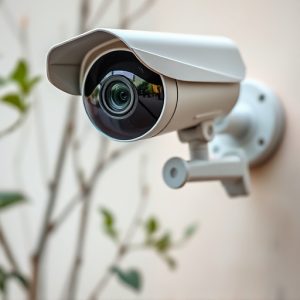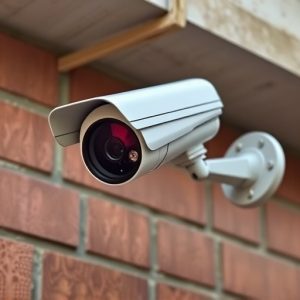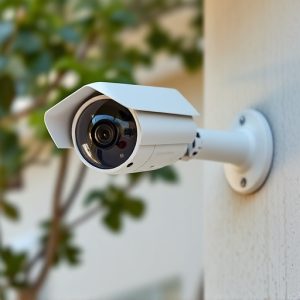Dummy Camera Power Solutions: Installation & Maintenance Guide
Understanding power requirements for dummy security cameras is key to successful installation and op…….
Understanding power requirements for dummy security cameras is key to successful installation and operation, whether wired or battery-powered. A Dummy Camera Bracket Installation Guide ensures compatibility and reliability by detailing power connections and adapters for both indoor and outdoor monitoring. The guide provides a step-by-step process for installing brackets, accessing wiring compartments, and testing connectivity. Wireless power options enhance aesthetics and simplicity. For prolonged monitoring, selecting appropriate battery backup systems (e.g., lithium-ion or lead-acid) matching camera power demands is crucial. Regular maintenance checks connections, mounting, and troubleshooting issues to ensure the longevity of the dummy security camera system.
“Enhance your home or business security with our comprehensive guide to dummy security camera power options. Understanding the diverse power needs of these devices is crucial for optimal setup and surveillance. This article offers a detailed look at various power choices, from hardwiring your dummy camera bracket with a step-by-step guide to exploring wireless options and selecting robust battery backup systems. We also provide essential maintenance tips to ensure your dummy camera setup remains reliable.”
- Understanding Dummy Security Camera Power Requirements
- Hardwiring Your Dummy Camera Bracket: A Step-by-Step Guide
- Exploring Wireless Options for Dummy Camera Power Supply
- Choosing the Right Battery Backup System for Continuous Surveillance
- Maintenance and Troubleshooting Tips for Long-Lasting Dummy Camera Setup
Understanding Dummy Security Camera Power Requirements
Understanding Dummy Security Camera Power Requirements
When installing a dummy security camera, it’s crucial to grasp its power options to ensure seamless operation and hassle-free setup. These cameras often come with various power connections, catering to different installation scenarios. The most common methods include battery-powered operation for temporary or discreet setups, and wired connections for more permanent installations. A Dummy Camera Bracket Installation Guide can be an invaluable resource here, detailing the specific power requirements and compatibility of various brackets and camera models.
Wired cameras typically use a standard power adapter, while battery-operated ones rely on high-capacity batteries designed to withstand prolonged periods without needing replacement. Understanding these power needs allows users to choose the right equipment, ensuring their dummy security cameras provide reliable monitoring solutions both indoors and outdoors.
Hardwiring Your Dummy Camera Bracket: A Step-by-Step Guide
Hardwiring your dummy camera bracket is a straightforward process that ensures your security system appears professional and reliable. Start by gathering your tools: a drill with a bit set, wire strippers, and any necessary screws or fasteners included with your bracket. Locate a suitable position for your camera—preferably high up and in plain sight—and mark the spot. Using the drill, create a small hole to accommodate the screw for securing the bracket. Follow the manufacturer’s instructions to attach the bracket firmly to the wall or surface.
Once the bracket is securely in place, access the back of it to reveal the wiring compartment. Carefully strip a small section of insulation from each wire leading from the dummy camera to ensure clean connections. Connect the wires according to your security system’s wiring diagram, typically involving color-coded leads that match specific functionalities like power, video, and ground. Tighten any connectors securely to prevent issues down the line. Test the installation by powering on the dummy camera and verifying its functionality within your security system.
Exploring Wireless Options for Dummy Camera Power Supply
Wireless options offer a convenient and flexible power solution for dummy camera installations, eliminating the need for unsightly cables and messy wiring. Many modern dummy camera brackets come equipped with integrated wireless charging capabilities, allowing devices to draw power directly from nearby chargers. This not only simplifies the setup process but also ensures a seamless integration that enhances the aesthetic appeal of your security system.
When considering a Dummy Camera Bracket Installation Guide, wireless power options should be at the forefront of your research. These systems are designed to provide reliable and stable power delivery, ensuring your cameras operate smoothly without any interruption. By choosing a wireless solution, you can say goodbye to cluttered wiring and hello to a cleaner, more professional-looking installation.
Choosing the Right Battery Backup System for Continuous Surveillance
When setting up a dummy security camera system, especially in areas with intermittent power supplies or for prolonged monitoring, selecting an appropriate battery backup system is paramount. This additional layer ensures continuous surveillance, providing peace of mind and robust security measures. The right choice depends on several factors, including the number of cameras, desired backup duration, and environmental conditions.
For a typical Dummy Camera Bracket Installation Guide scenario, consider lithium-ion batteries, renowned for their high energy density and reliable performance. These batteries can power multiple cameras for extended periods, making them ideal for remote or hard-to-reach locations. Alternatively, lead-acid batteries offer a more affordable option but may require more frequent maintenance and have a lower cycle life. Always match the backup system’s capacity with your camera’s power demands to ensure optimal performance and prolonged surveillance without interruptions.
Maintenance and Troubleshooting Tips for Long-Lasting Dummy Camera Setup
Regular maintenance is key to ensuring your dummy security camera setup remains operational and effective over time. Start by checking the power connections regularly; loose or faulty cables can disrupt footage and cause false alarm notifications. A simple tightening or replacement can prevent unexpected issues. Additionally, keep an eye on the camera’s bracket installation; secure mounting is essential for stability and accurate positioning. Following a Dummy Camera Bracket Installation Guide can help prevent future dislodging or misalignments.
Troubleshooting common problems should become part of your routine maintenance. If you notice flickering or intermittent footage, verify power sources and cable connections. Dust or debris buildup on the camera lens may also cause imaging issues; periodic cleaning with a soft cloth ensures optimal picture quality. Remember, consistent care and attention to these details will contribute to the longevity and reliability of your dummy security camera system.
In conclusion, selecting the appropriate power options for your dummy security camera is a crucial step in ensuring optimal surveillance. By understanding your camera’s power requirements, following a comprehensive Dummy Camera Bracket Installation Guide, and exploring wireless or battery backup solutions, you can achieve a reliable and efficient setup that meets your security needs. Regular maintenance and troubleshooting will further ensure your dummy camera system lasts for years to come.


